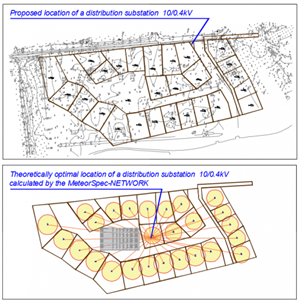I have the following problem with the preliminary design stage of a residential area:
The software I use can calculate a theoretically optimal location of a distribution substation for low-voltage networks. This place is calculated as a "center of power demand" or "center of gravity" of electrical consumers.
If the substation locates in this optimal place, we can design 0.4kV distribution feeders with a minimum length and power losses in low-voltage feeders are minimal.
I understand it’s almost impossible to put it exactly there, and I consider some sites nearby. But the architect believes that this is unacceptable in terms of landscape design and wants to place the substation in a far corner.
Who should be the arbiter in this situation? DNO representative takes a neutral position. Local authorities are completely on architect side, they do not care that long power cables will heat the atmosphere for many years to come.


